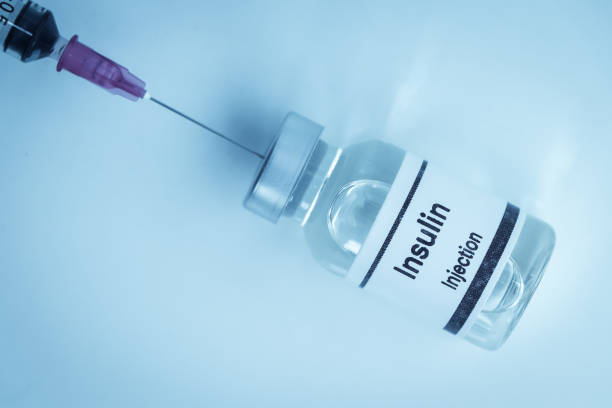1923 – Insulin becomes generally available for use by people with diabetes.
The year 1923 stands as a pivotal moment in medical history, marking the widespread availability of insulin for the treatment of diabetes. This breakthrough transformed diabetes from a fatal disease into a manageable condition, offering hope and extended life to millions worldwide. The journey to this achievement is a compelling narrative of scientific curiosity, perseverance, and collaboration.

Early Understanding of Diabetes and the Pancreas
Diabetes has been recognized for centuries, characterized by excessive thirst, frequent urination, and weight loss. Despite detailed clinical descriptions, its cause remained elusive. In the late 19th century, researchers began to suspect a link between the pancreas and diabetes. In 1869, German medical student Paul Langerhans identified clusters of cells within the pancreas, later named the islets of Langerhans. The function of these cells was unclear, but their discovery hinted at an internal secretion related to glucose metabolism.
In 1889, German physicians Oskar Minkowski and Joseph von Mering conducted experiments removing the pancreas from dogs, observing that the animals developed severe diabetes. This provided strong evidence of the pancreas's role in regulating blood sugar. Subsequent attempts to isolate the specific substance responsible were unsuccessful, as early pancreatic extracts were impure and caused adverse effects.
Breakthrough in Toronto: Discovery of Insulin
The turning point came in 1921 at the University of Toronto. Dr. Frederick Banting, a Canadian surgeon, hypothesized that isolating the internal secretion of the pancreas could treat diabetes. He approached Professor John Macleod, an expert in carbohydrate metabolism, who provided laboratory space and assigned Charles Best, a medical student, as his assistant.
Banting and Best conducted experiments by ligating the pancreatic ducts of dogs, causing the exocrine tissue to degenerate and leaving the islets intact. They extracted a substance from these islets and administered it to diabetic dogs, observing a significant reduction in blood sugar levels. This extract, initially termed "isletin," was later renamed insulin.
Recognizing the need for a more refined and pure form of insulin suitable for human use, Macleod enlisted biochemist James Collip to the team. Collip's expertise was instrumental in developing a purification process that produced a safer and more effective insulin extract.
First Human Trials and Immediate Impact
In January 1922, the first human trial of insulin was conducted on 14-year-old Leonard Thompson, who was critically ill with diabetes. The initial injection caused an allergic reaction due to impurities. Collip refined the extract further, and a second administration resulted in a remarkable improvement in Thompson's condition, with blood glucose levels returning to near-normal and a significant alleviation of symptoms.
The success of this trial garnered international attention, leading to a surge in demand for insulin. The University of Toronto, holding the patent for insulin, sought to make it widely available while maintaining quality control. They collaborated with pharmaceutical companies, notably Eli Lilly and Company in the United States, to scale up production. By October 1923, Eli Lilly had begun mass production of insulin under the brand name Iletin, making it accessible to patients across North America.
Global Expansion and Nobel Recognition
The impact of insulin was profound and immediate. Patients who were previously facing certain death began to recover, gaining weight and returning to normal activities. The medical community recognized the significance of this discovery, and in October 1923, the Nobel Prize in Physiology or Medicine was awarded to Banting and Macleod. In a gesture acknowledging the collaborative effort, Banting shared his prize money with Best, and Macleod shared his with Collip.
Internationally, the production of insulin expanded rapidly. In 1923, pharmaceutical laboratories in Germany began production under licenses from the Toronto Insulin Committee. Denmark and Austria followed suit the same year, with Hungary, Australia, and Argentina commencing production in 1924. This global effort ensured that insulin became available to diabetes patients worldwide.
Evolution of Insulin Therapy
Following its introduction, efforts focused on improving insulin formulations to extend its duration of action and reduce the number of daily injections required. In 1936, researchers developed a protamine-zinc insulin complex that prolonged insulin's effect. This was followed by Neutral Protamine Hagedorn (NPH) insulin in 1946, which became a standard intermediate-acting insulin.
The 1970s and 1980s witnessed the advent of recombinant DNA technology, enabling the production of human insulin. In 1982, the first biosynthetic human insulin, Humulin, was approved, offering a product identical to natural human insulin. Subsequent developments led to insulin analogs with tailored absorption and activity profiles, enhancing glycemic control and patient convenience.
Legacy and Ongoing Research
The discovery and commercialization of insulin in 1923 transformed diabetes management, turning a fatal disease into a chronic but manageable condition. This breakthrough has saved countless lives and continues to be a cornerstone of diabetes treatment.
Research into diabetes and insulin therapy persists, with efforts aimed at developing more effective delivery systems, such as insulin pumps and inhalable insulin, and exploring potential cures through pancreatic islet transplantation and stem cell therapy.
The journey of insulin from a laboratory discovery to a life-saving therapy exemplifies the profound impact of scientific innovation and collaboration on human health. The events of 1923 not only changed the prognosis for diabetes patients but also set a precedent for future medical breakthroughs.
Photo from iStock
0 Comment to "The Life-Saving Breakthrough of 1923: How Insulin Transformed Diabetes Treatment and Global Health Forever"
Post a Comment